The Jonathan Stewart Collection
Jonathan Stewart began collecting fossils as a boy, after finding a Gryphaea amongst some gravel. In his childhood he lived in Oulton Broad and so explored the nearby Suffolk coast. But since 1997 he has lived in Sheringham and mainly concentrates on the North Norfolk coast and especially on the West Runton Freshwater Bed. I have known him since he was 11 years old when his mother Janet brought him with his fossils to Cromer Museum for identification. Since my retirement in 2011 I have been working more and more closely with Jon to help him understand the local geology and facilitate more detailed recording of field data in order to make his collection more scientifically useful. I have guided him in basic curation of the collection by giving each item a serial number, writing the number on the specimens and recording basic facts in an accession register. I have also been photographing specimens on a casual basis, helping to get them identified and acting as a go-between to bring the material to the attention of the academic community in museums and universities. Since 2017 we have been adding data into a 'Modes' database, which uses the same data standard as the Norfolk Museums Service, so it can be shared with ease. Creating a database allows more information to be added over time as specimens are researched, conserved, photographed and so on. It can also be indexed, searched, exported, printed or published online. Once the data is in there it can be used in many ways.
Meanwhile Jonathan has been volunteering at the Norwich Castle Study Centre where he has been working an impressive rhinoceros skull under guidance from the staff, learning how to tailor storage boxes to protect delicate specimens and has also been using the collection with the curator of Natural History to help identify material to species where possible. We have been to the Natural History Museum in London together to show key specimens to the staff there and plan to go again to learn about mammoth molar identification.
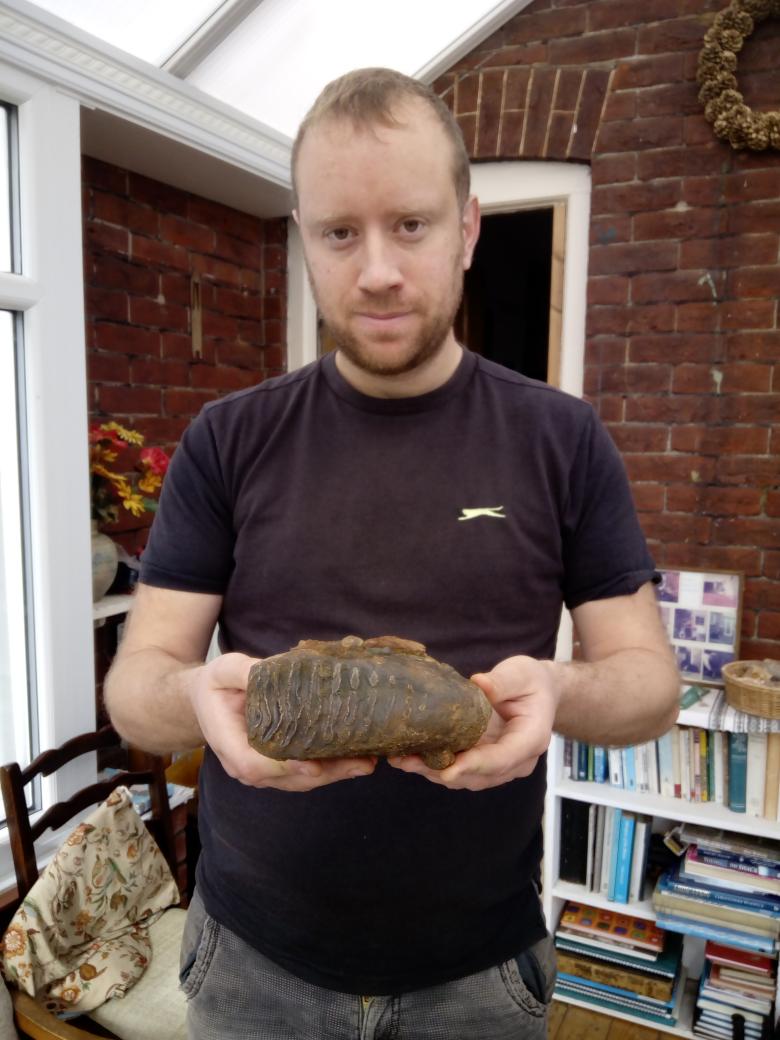
Jonathan Stewart with a mammoth molar from the West Runton Freshwater Bed, 2017
Jonathan has a keen eye in the field and can spot delicate bones, such as bird bones and small carnivores, which other collectors may overlook. He is also a frequent visitor and this means that not only is he picking up the rare finds but he is sometimes finding multiple parts from the same individual animal. Under normal circumstances specimens are taken away by individual collectors who do not collaborate or even know of each other. Therefore specimens that have broken apart or become disarticulated in antiquity become even more widely dispersed after discovery. This is a great pity, as valuable scientific information is then lost and specimens are diminished in value. With better co-ordination it would be possible for specimens to be re-united, if only virtually or temporarily, and greater knowledge can be gained for science. I encourage all collectors to collaborate and share information about their finds, perhaps using the Norfolk Museums Service as the interlocutor.
The key to gaining the most out of collecting on the Norfolk Coast is team work. While I do not have the time, the eyesight or the ability to crawl around in the field any more, I can at least work with Jonathan and guide him. In the long run a well-curated collection should find a home in a public collection where it will be available for science in perpetuity. However, it isn't much use without the information to go with it about exactly where the finds came from and which beds they were in if they were in situ. This allows a geologist to determine the stratigraphic context and hence the age of the specimens. So, please number your specimens and keep good records.
Catalogue of specimens
Click on the links below to explore the Jon Stewart collection.
Highlights
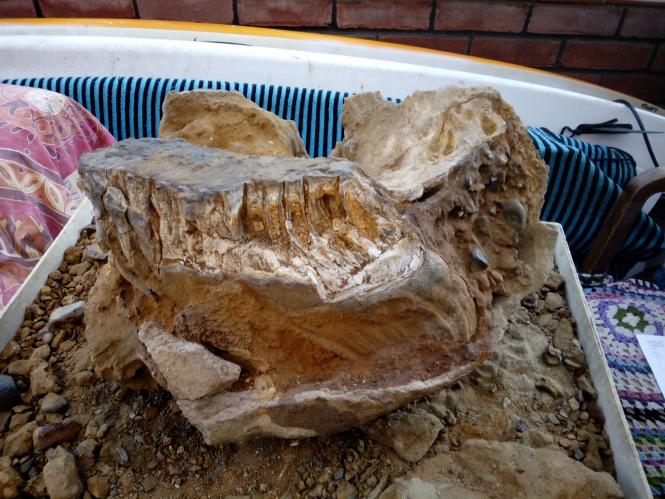 JS151 Mammoth jaw from Beeston Regis | 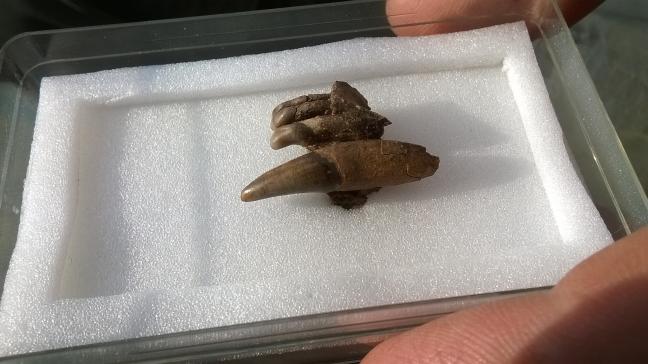 JS101 Otter upper incisors and canine from West Runton |
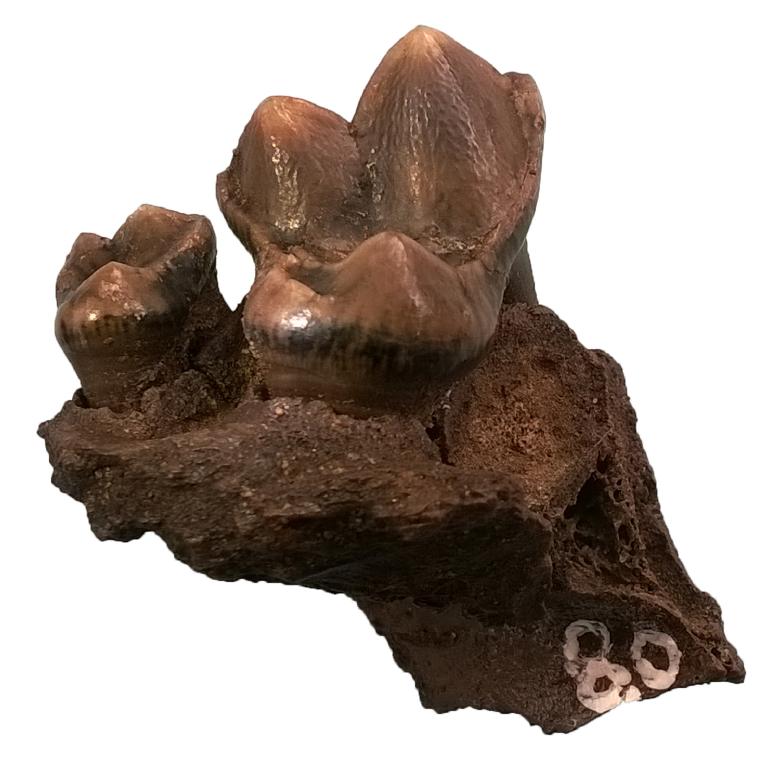 Teeth of a wild dog from West Runton | 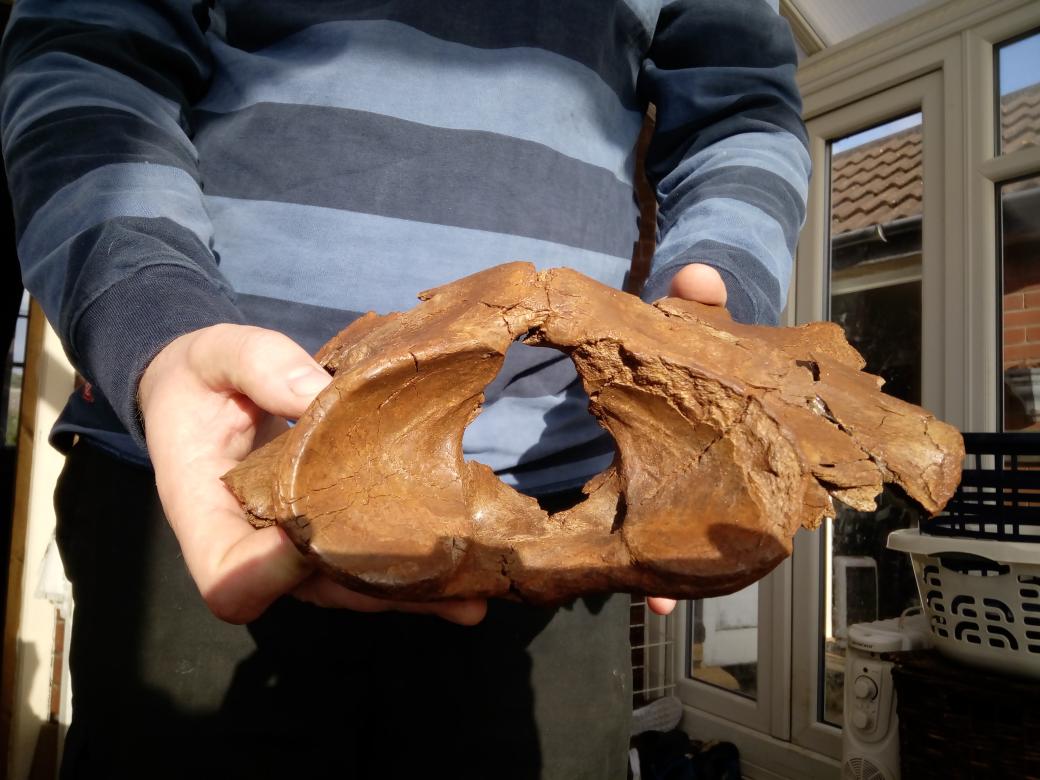 Atlas bone of a rhinoceros from West Runton |
Jonathan also discovered a magnificent rhino skull which he has donated to the Norwich Castle Museum and Art Gallery.
Back to the top